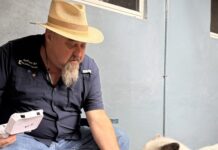Released in 1983, “A Christmas Story” has become a classic holiday film. The fictional story follows Ralphie, a blond elf of a child played by Peter Billingsley, longing for some light weaponry of his own – specifically a Red Ryder BB gun — for Christmas. Originally, the film saw only modest critical and box office success, holding its head above water, but failing to make any strong impressions. Like many other holiday flicks though, the real love came later as “A Christmas Story” found a second life playing on heavy repeat on cable, and now a third life streaming consistently through December 25 each season.
So how did an admittedly absurdist, darkly tinged holiday story become a beloved classic? Careful craft, timing and tone. Prior to the early 1980s, the dominant Christmas films still played to classic themes with, arguably, increasingly outdated tropes. At the risk of losing readers before we even discuss the leg lamp, it could be argued that “A White Christmas”, with its misstep of a minstrel dance number and flat female portrayals, can only age so well (apologies, Mr. Crosby, Mr. Berlin). But, tired ideals aside, there are also prevailing styles of dominant comedy in each generation. In the 80s, conversations were shifting and the appetite for comedy was changing from a desire for the syrupy sweet movies of earlier eras. Those films no longer satisfied an increasingly self-aware new audience eager for more punch and fewer dance numbers.
Enter irony. Enter realistic portrayals of flawed families. Enter anti-nostalgia.Enter Jean Shepherd, a humor writer, radio and television personality, who was the creative force behind this cinematic classic. “A Christmas Story” evolved from “In God We Trust: All Others Pay Cash”, a collection of semi-autobiographical short stories Shepherd originally penned for “Playboy” in the 60s. With Director Bob Clark, Shepherd adapted three of his stories to create the script. Clark first became aware of Shepherd’s humor when he was driving around Miami and heard the writer on the radio telling the story of an unfortunate kid who was ‘triple-dog-dared’ into licking a pole on an icy winter day. Clark determined right then and there that he would work with Shepherd and drove around for 45 minutes that afternoon, listening to the story. Twelve years later the idea came to fruition. Since the story was Shepherd’s own little Christmas baby, he remained involved in every fiber of the movie, from the narration (a style later adopted by “The Wonder Years”) to a cameo as a grumpy store clerk hustling children through their Santa visits. Fortunately, both writer and director were pleased with the ultimate result.
A wacky holiday film couldn’t come across as authentically weird though if things weren’t a bit off-kilter on set. To its legions of fans, 60,000 of which flock to Cleveland every year to tour the home used in the film, the stories from behind the scenes rival the comedy on screen. In the tone of the film, some of the funnier anecdotes might not fly on set today with child actors, but are hilarious fodder for 80s babies raised in a culture of “Are you bleeding? You’re fine.” One of the most famous scenes sees Flick, played by Scott Schwartz, getting his tongue stuck to a frozen pole. While his tongue was actually just pulled to the pole by a suction cup device, the ‘sticking’ was real. Schwartz was a notorious prankster on the film set, so when the moment to film that pinnacle scene approached, Clark had his revenge in mind. Schwartz’s tongue was suctioned to the pole and the director called for a lunch break, prompting the whole crew to walk off set. Perfect revenge, but also a directorial decision that elicited the character’s (real life) panicked arm flapping. Other on set moments were less intentional. In Ralphie’s cowboy moment, he can be seen chewing tobacco. Typically, actors gnaw on black licorice or raisins to recreate the look of gumming some chew. Naïve production staff though simply handed twelve year old Billingsley a pack of tobacco and instructed him to start chewing. The film also spawned two of the most iconic set pieces in cinematic history – the leg lamp and Ralphie’s pink bunny suit. The lamp was created by Production Designer Rueben Freed and was kept boxed up until its big reveal in front of the cameras, eliciting another authentic response as Billingsley gawks at the strange sexy prize that’s landed in front of him. As for that ridiculous pink costume – that gem remains safely ensconced in Billingsley’s personal collection.
And now, forty years after its release, the film that turned holiday nostalgia on its head with ironic realist comedy, is ironically nostalgic. The actors speak fondly of their experiences making the film and most even reprised their roles as adults for the 2022 sequel. Viewers are still watching, still discussing, still saying “fra-gee-lee” and warning others not “shoot their eye out.” Famed screenwriter Robert McKee once famously told a class, “Don’t tell me you’re going to create a new genre for your movie. There is no new genre. There are comedies, dramas, and tragedy. There’s only one movie that I can argue has been a new genre in the modern era—A Christmas Story.” So whether viewed as a seismic directional shift in generational comedy, or simply as a holiday romp, “A Christmas Story” endures.



























